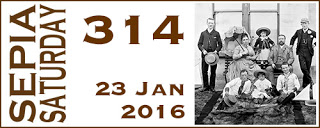Here are some postcards advertising kitchen ranges from early- to mid-twentieth century. The card above advertising the Quick Meal Range is circa 1909-10. This range was apparently made of iron with ornate embellishments.That looks like a coal bucket next to it. Both wood and coal were used for cooking at that time.
The next two postcards advertising "modern" Monarch ranges are probably from the early 1930s. No mention is made of the type of fuel used by these stoves. The first model looks like a modernized version of an old wood or coal burning stove. It was a "balanced design" incorporating "adequate equipment for heating and cooking." and was available in either Ivory-Tan or Nile-Green porcelain enamel finish. The second model looks closer to the more modern ranges of the last 75 years. It had a practical "4-in-line" top, a large bake oven, a warming compartment, a light, and a timer clock. It was available in Ivory-Tan, Nile-Green, or White.
There were big changes in cooking stoves in the thirty years between 1910 and 1940, but not many obvious changes from 1940 until now.
Early electric stoves were unsatisfactory for several reasons. "By the 1930s, decreased cost of electric power and modernized styling of electric stoves had greatly increased their acceptance. Electric stoves and other household appliances were marketed by electrical utilities to build demand for electric power." (source: Wikipedia)
The 1940s Frigidaire models illustrated on the next two postcards don't look very different from today's stoves. The 1940 Frigidaire Special Model B-15 on the first Frigidaire card has features comparable to more expensive models — 5-Speed Surface Cooking, Twin Unit Oven, Thermizer well cooker, High-Speed Broiler, and Cooking Top Lamp.
The 1953 Crosley electric range also still looks fairly modern. Crosley also manufactured automobiles, and the back panel reminds me of an auto dashboard. This range has two "Bake-Best" ovens, and "Automatic Mastermind," and Pushbutton controls for seven surface heat speeds.
Appliance company ads seem to emphasize electric ranges and appliances. When a gas range is shown, the ad is often promoting the use of gas rather than a specific brand of appliance. The ad below promoting modern gas ranges is from the December 1939 issue of The American Home magazine.(This image can be enlarge to an easy reading size)
Visit Sepia Saturday
To See more Vintage Images

























